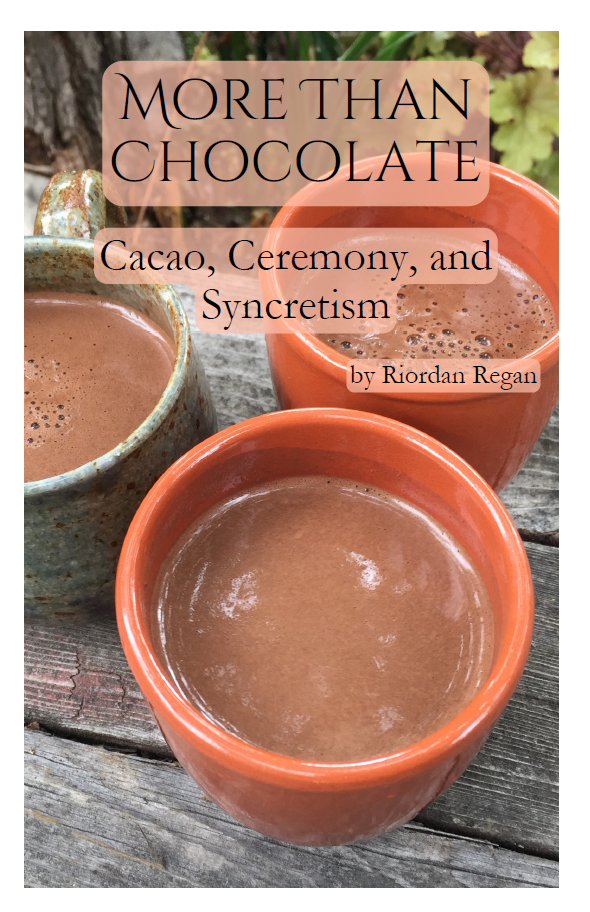Cite Your Sources—Respect & Reciprocity in Modern Cacao Circles
by Riordan Regan
Photo of dried cacao beans taken by David Nilsen.
Few foods and beverages around the world have inspired as much passion as chocolate.
Cacao is the tree and raw fruit from which chocolate is made. In either form, we all seem to sense that it’s more than a food or drink. In English, people describe their relationships with chocolate like human ones, yet often in extremes, using metaphors from love affair to addiction.
For the Indigenous peoples, past and present, who discovered, domesticated, and transformed cacao over thousands of years in Meso- and South America, trees and plants are often seen as sacred intermediaries that help humans unlock the cosmos’ deepest wisdom. Importantly, however, relationships in these cosmologies rely on reciprocity—an exchange of giving and receiving according to the means and abilities of each plant, tree, animal, human, and astral actor in the ecosystem. As humans, sometimes our egos get in the way of maintaining reciprocal exchanges, and some Indigenous cosmovisions in these areas state that whenever that happens, the cacao tree comes out of the forest to help restore the balance.
Today, more people outside these cultures are discovering cacao as distinct from chocolate, particularly in wellness, spiritual, and “conscious” circles. It’s being served at events from concerts and festivals to retreats, rituals, and dedicated gatherings—which many are calling “cacao ceremonies,” sometimes even describing them as a traditional practice.
The problem? There is no such thing as a “cacao ceremony” in Indigenous tradition. Instead, this is a modern invention, a product of syncretism: the process of combining multiple belief systems and practices to create something new.
It is true that cacao has held spiritual, social, medicinal, and economic significance in Meso- and South America dating back to the days of the ancient Olmec, Maya, and Nahua civilizations (the more respectful term for the diverse people of which a group referred to as the Aztec were a part). But it wasn’t served in dedicated ceremonies. Instead, it was incorporated into other rituals, offerings, and gatherings: from those marking astrologically and astronomically significant events—a solstice or equinox, planting or harvest—to community celebrations such as weddings, funerals, and coming-of-age rituals.
With no evidence of a specific "cacao ceremony” in the archaeological record or cultural memory, some Maya elders are actively asking people to stop misrepresenting the past and present of this sacred tree and fruit whose future is increasingly in jeopardy. Cacao only grows in a narrow latitudinal band stretching around the equator (sometimes referred to as “the cacao belt”). In recent years, some growing regions—particularly in west Africa—have been ravaged by drought and disease. As a result, supplies have been reduced, sending prices skyrocketing even as demand grows. Given the systems of colonialism, exploitation, appropriation, and oppression surrounding global trade and agricultural relationships, this situation only tends to worsen conditions for growers and their communities, compensated even less amidst lost crops and livelihoods while wealthy power brokers rake in profits.
Photo of cacao flower taken by David Nilsen.
Some say this is the natural outcome of a lack of stewardship and respect for this plant, overused by the chocolate industry for centuries with similar patterns beginning to replicate in the nascent cacao market. For the zine More Than Chocolate: Cacao, Ceremony, and Syncretism, I spoke with leaders in this field who strive for sustainability, fairness, and protection throughout human and botanical ecosystems, as well as elders and knowledge-keepers descended from and working with Maya lineages. While these sources support people drinking cacao, they emphasize that the situation must be approached with great reverence and caution.
So, how can people in non-Indigenous contexts engage with cacao in a way that’s meaningful yet respectful?
Cite your sources: If you’re hosting a gathering or event, give credit to the Indigenous cultures that discovered cacao as a food, beverage, medicine, and sacrament. However, don’t claim that syncretic, or multicultural, contexts–from dances and concerts to events combining cacao with meditation, yoga, or kirtan (chanting)--are an Indigenous practice. On the contrary, clarify that they’re not traditional, citing Indigenous worldviews as inspiration.
Avoid the Hype: If you’re an attendee, be wary of overpriced “ceremonies” that lean on buzzwords like “ancient” or “shamanic” and seek facilitators who call for cultural sensitivity. If the sources of cacao being shared aren’t advertised, ask the facilitator, and avoid those who can’t or won’t provide information about where the cacao came from and the facilitator’s relationships with these providers, including how they were compensated.
Don’t call it a “cacao ceremony”: Some Indigenous elders and knowledge-keepers specifically ask people not to use the phrase “cacao ceremony”, a term that perpetuates confusion about what is and is not a traditional practice. Describe your event and how cacao will be incorporated into it.
Support Indigenous Communities: Buy cacao from responsible sources that directly benefit Indigenous farmers, especially those with direct-trade agreements and/or that pay more than Fair Trade rates (demonstrated not to be, in fact, all that fair). Prioritize distributors that have actual relationships with farmers and cooperatives, listing them by name on their website or packaging and supporting projects that give back to local communities.
Be Intentional: Before sipping, think about your intention for drinking cacao, tapping into gratitude for the plant and people who brought it to your cup.
Many cacao practices in multicultural settings are not wildly dissimilar from ancestral ones. However, claiming that these practices are themselves traditional is misleading and culturally appropriative. Syncretic gatherings lack the cultural context and communal significance that defines traditional use. By clarifying this distinction, we can help protect cultural integrity and cacao’s legacy against commodification, fostering respect and awareness of the plant’s deep and far-ranging roots.


